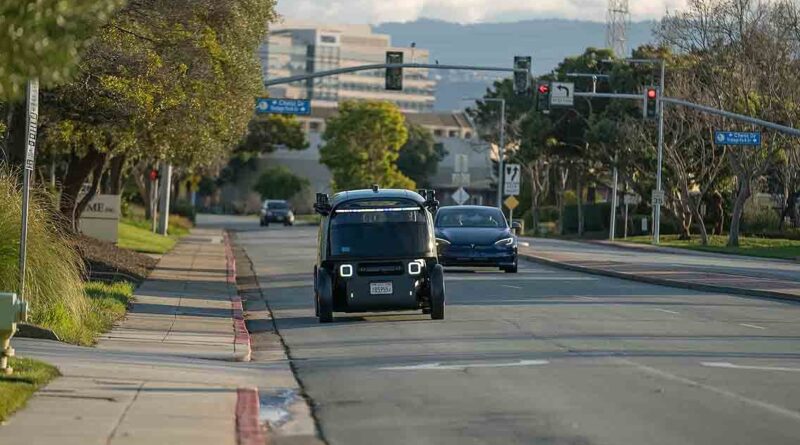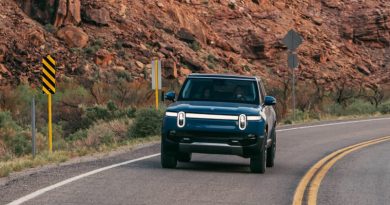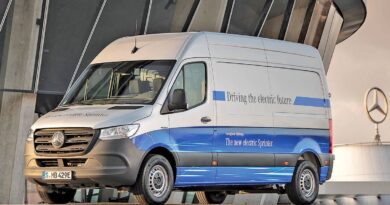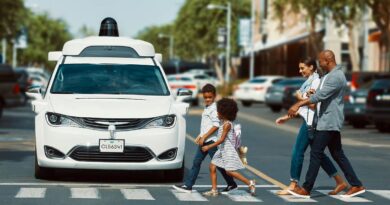NHTSA and others interested in knowing how Zoox self-certified its robotaxi
Federal regulators are reviewing whether the robotaxi made by Zoox meets requirements to travel on public roads following the self-driving company’s use of the vehicle to transport employees last week.
Unlike a conventional car and the vehicles most other robotaxi developers are using, the Zoox vehicle lacks the steering wheel, brake pedal and other controls human drivers need.
Amazon-owned Zoox started using the robotaxi on Saturday to transport employees between two company offices in Foster City, Calif., after receiving a permit from the state’s Department of Motor Vehicles. To obtain the permit, Zoox self-certified that the electric vehicle met existing Federal Motor Vehicle Safety Standards, CEO Aicha Evans said.
Manufacturers can self-certify compliance. In some cases, NHTSA may scrutinize self-certifications to ensure they conform with the standards.
That’s what’s happening with Zoox.
“The agency is evaluating the basis for these self-certification claims and, as part of this effort, continues to review information provided by Zoox in response to questions previously posed by the agency,” a NHTSA spokesperson told Automotive News.
The regulatory agency does not preapprove or prohibit the introduction of new vehicles or vehicle technology, so long as they conform with the motor vehicle safety standards. Autonomous vehicles that do not comply with the standards can still be deployed, so long as companies first receive a NHTSA exemption.
Zoox did not apply for an exemption, nor did the company pursue other lesser-known regulatory avenues, such as exporting and importing vehicles. Nonetheless, Evans said there were “no limitations” on the company’s deployment, which to date involves a single robotaxi traveling a 1-mile route between the Zoox buildings. Only employees are passengers.
Evans declined to elaborate on how Zoox interpreted the federal standards and its compliance. But many autonomous vehicle industry experts are wondering.
“There is some potential risk in this,” said Sam Abuelsamid, principal analyst at consulting firm Guidehouse Insights. “It is still an open question on whether what Zoox is doing is legit. Their legal team seems to think it is.”
Zoox’s deployment comes as the industry has grown frustrated with the pace at which federal laws and regulations have addressed auto technology advances, three people familiar with discussions between AV companies and NHTSA said. As companies consider deployments, they’re seeking strategies for navigating the motor vehicle safety standards.
Self-certification is a prominent one.
“Self-certification is a bedrock principle of automotive regulation in the United States, so it’s not surprising to see that approach in the deployment of autonomous vehicles, including those with novel designs,” said Ariel Wolf, chair of the autonomous and connected mobility practice group at Washington, D.C., law firm Venable.
Another regulatory path involves seeking an exemption, such as the one Nuro received in February 2020 for its low-speed delivery vehicles, which carry no humans.
But the exemption process can be cumbersome: General Motors withdrew an exemption petition in October 2020 after it lingered for nearly three years with no answer from NHTSA. Even if successful, exemptions can take years to process, they cap the number of vehicles allowed on the road at 2,500, and they must be renewed every two years.
Zoox’s strategy of self-certifying — and NHTSA’s pending response — may illuminate a path for other companies developing vehicles without traditional controls, perhaps with the Cruise Origin being a high-profile example.
GM and Cruise put forth an exemption request for the Origin in February 2022, and the company said it was ready to build the AV at its Factory Zero in Michigan. They’re still waiting for approval. Should NHTSA ultimately view Zoox’s self-certification as compliant, that could embolden GM and Cruise to instead follow that route, Abuelsamid said.
“My guess is GM will probably wait for the waiver unless it drags on for an indeterminate period of time,” he said. “But they could say, ‘OK, Zoox is doing this. We’re going to do it, too.’ They certainly would like to start deploying the Origin for commercial purposes.”
Zoox said its efforts toward compliance began years ago, when it started the blueprints for a robotaxi shortly after the company’s 2014 founding.
Rather than design a vehicle dependent upon updates to the motor vehicle safety standards or an exemption request, Zoox engineered its bidirectional taxi to meet or exceed current regulations, a company spokesperson said. The goal was to avoid relying on any regulatory action beyond its control.
Meanwhile, Zoox worked to build a case that its vehicle innovations improved safety above conventional levels. It described technical advances such as four-wheel braking and steering in its 2021 Voluntary Safety Self-Assessment submitted to NHTSA. Those were among more than 100 safety innovations Zoox listed for vehicle.
Although the company intended to avoid reliance on regulatory advances, its self-certification efforts may have benefited from two key decisions by NHTSA.
The first came in February 2016. In a landmark moment, NHTSA determined a self-driving system could be considered the “driver” of a vehicle in response to a query from Google, even though no federal motor vehicle regulations exist to govern artificial intelligence.
In 2020, NHTSA allowed for greater leeway in how manufacturers of vehicles with novel designs, such as those without steering wheels or brake pedals, might pass the standards’ muster. In cases in which the standards did not spell out test procedures or no test existed for a new technology, manufacturers “are not required to use the test” described in the standard, the agency wrote.
Instead, they were free to devise their own “simulations or engineering analyses,” which demonstrated compliance.
Asked how Zoox conformed with the standards, a company spokesperson said Tuesday, “We completed a series of physical tests, computer simulation, engineering analyses and technical milestones” that demonstrated the company met and, in some cases, exceeded safety standards and performance thresholds.
“The onus is on us to show how we meet those requirements,” Evans said Monday. “And that’s what we’ve done.”
Source : Autonews.com




